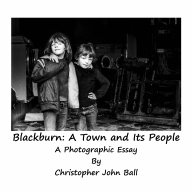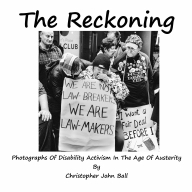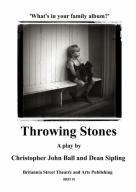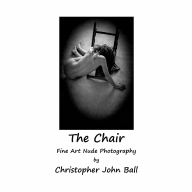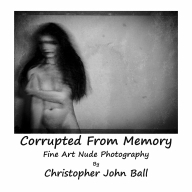
A Short Introduction to the Albumen Process by Christopher John Ball

Tweet
Albumen Printing
Until 1850 prints had traditionally been made on salted paper (paper that had been impregnated with Silver Chloride) that had been coated with a solution of Silver Nitrate. This process was thought to have little strength. A base that could hold more silver was required. Blanquart-Evrard, of Lille, suggested coating the paper with a thin film of egg white (Albumen) prior to sensitising with a Silver Nitrate solution. Discovery of this process has also been credited to Talbot, Le Gray, Hunt and Pollock. The resultant prints were then toned with Gold Chloride. This method of producing prints remained in almost universal usage for 30 years. It eventually lost favour when the first printing-out-papers arrived. These used Collodion or Gelatin as the carrier for the sensitive silver salts.Sizing/salting solution.
18 average sized eggs or enough to produce 500ml of egg whites
15-g ammonium chloride or salt
15-ml distilled water
2-ml 28% acetic (glacial) acid
15-g sodium citrate (an optional preservative - recommended)
2 drops Kodak PhotoFlo/Wetting Agent (optional - recommended)
Sensitiser.37.5-g silver nitrate
250-ml distilled water
2 drops 6.5-7% potassium dichromate (an optional contrast control - recommended)Hardener.
70% isopropyl alcohol with 3% ammonium chloride added
Other Requirements.
gum arabic solution
Preparing the AlbumenSeparate the eggs, avoiding getting yolk or shells or other stringy matter in the whites; collect 500ml of egg white. Pour the 500-ml of egg whites, 2-ml of 28% acetic acid, 15-ml of distilled water and 15-g of ammonium chloride into a suitable Pyrex bowl.
Beat the mixture with a whisk for at least 30 minutes. The mixture will look meringue-like but will not stiffen. The longer the mixture is beaten, the finer the suspended air bubbles will become until nothing is left but a fine froth.
After beating, cover the bowl with cling film, and place it in a refrigerator overnight. The mixture will settle, leaving a dirty froth on top. Remove and discard the froth, and filter the remaining albumen (approximately 350-ml of a surprisingly free-flowing liquid) through cheesecloth, folded two or three times, into a jar with a plastic lid. Age the mixture in a refrigerator for a week or so. This is the sizing/salting mixture.Coating the Paper
Pour the albumen into a rectangular Pyrex dish. Remove any tiny bubbles which may have formed on the surface of the liquid. Place a sheet of paper, front side down, on the surface of the albumen. (Check the watermark; if the watermark reads correctly, you are looking at the front side of the paper.)
Float the paper on the mixture for approximately three minutes; gently press the corners down so as to ensure even coating.
So as not to produce undesirable print-through effects in the final prints make sure that no albumen gets onto the back of the paper.As the paper floats on the mixture, the curled edges will relax to fully coat the surface of the paper. After three minutes use a wooden implement to lift one corner of the paper and lift the sheet from the surface of the albumen, allowing for the liquid to drain.
Hang the paper and blot off excess as the coating dries. A wooden toothpick works well to pop or scrape away any surface bubbles and to squeegee the thick edge, which will form at the bottom of the paper.
Double Coating
Though not essential a double coating produces prints with a glossier finish with a more even coating and which exhibit a greater density.After the paper has dried, immerse it for 15 seconds in a solution of 70% isopropyl alcohol with 3% ammonium chloride added. This will harden the albumen for the second coat.
Without this hardening step, the first albumen coating would otherwise wash away with the second coating. When the alcohol has evaporated (fully - else the second coat won't stick), float the paper on the surface of the albumen mixture once again following the previously described procedure. Hang to dry from the opposite side for even results, blotting away any excess along the bottom edge. Hang prints back to back to prevent excessive curling.
Sensitising the paper.
Coated paper will keep for several weeks if sensitising is to be performed at a later time; however, it is best to sensitise the paper as soon as it is dry.
Wear rubber gloves unless you want brown/black/purple stains on your fingers, fingernails and/or clothing. Silver nitrate will react with the salt of your skin to form silver chloride, just as it does on paper, and will "develop out" in a matter of a minute or two in sunlight. Wearing safety glasses is also recommended, for silver nitrate can cause permanent damage if even a small amount is splashed into the eyes. All of the following techniques may be carried out in subdued tungsten lighting; though avoid fluorescent lamps and other sources of UV light.
Add 37.5-g of silver nitrate to 250-ml of distilled water to make a 15% solution.
Method 1 - Floatation coating.
Pour 15% silver nitrate solution into a flat-bottomed tray. The rectangular Pyrex dish used for albumen coating will work but it MUST be one that has been used to previously cook with. Float the coated paper on the surface of the solution for three minutes, avoiding air bubbles. Peel the paper from the surface, and hang to dry.
Some salt will inevitably leech from the paper surface, reacting with the silver nitrate solution and forming a precipitate, which will eventually settle on the bottom of the coating tray and storage bottle. Carefully pour the liquid back into its storage bottle leaving the last few millilitres so as to prevent the heavier precipitate from being mixed with the solution. Filtering off the precipitate after every use will also extend the life of the silver nitrate solution.
Method 2 - Glass rod or brush coating.
Tape the albumen-coated paper to a sheet of plate glass with drafting tape. If the negative to be printed is smaller than the paper lay the negative on the paper and lightly mark off the corners with a pencil, using these marks as a guide for coating.
Transfer 45 drops (this is for a 8x10 print; use a proportional amount for other sizes of paper) of 15% silver nitrate solution in a plastic medicine cup. Optionally add 9 drops (again for a 8x10 print; use a proportional amount for other sizes of paper) of gum arabic solution, which will aid in spreading the emulsion.
Mix the solutions with a glass rod. Use a brush without a metal ferrule (such as the Japanese Calligraphy Brushes), or a glass coating rod to apply the solution to the paper. A coating rod is the preferred device for spreading the emulsion, since creating streak-free papers is rather difficult, though not impossible, with a brush.
The addition of gum arabic will give the solution an oily appearance, making seeing and spreading the coating easier.The paper should be air-dried whilst taped to glass or it may be carefully removed from the glass and hung to dry.
Method 3 - Wash coating.
Tape the albumen-coated paper to a sheet of plate glass with masking tape. If the negative to be printed is smaller than the paper lay the negative on the paper and lightly mark off the corners with a pencil. These marks can be used as a guide for coating. Tilt the glass plate about 45 degrees for coating.
Add 3 or 4 millilitres of 15% silver nitrate to a small test tube. Place a wad of cotton tightly into it so that about a third of the wad protrudes from the end. Tilt the test tube to allow the solution to fully saturate the cotton. This will create a felt tip style pen with which to paint the paper with Silver Nitrate.
Hold the test tube at a right angle to the paper, and starting from the top left corner, lightly "paint" a streak of solution across the top of the paper. When the right edge of the paper is reached, paint a streak in the opposite direction. Make sure the streaks of the solution overlap slightly, spreading the bead of solution, which gathers at the bottom of each stroke. Continue this pattern, right-left, left-right and right-left, until the end of the paper is reached. The paper should have a uniform coating and show no evidence of streaking.
Air or hang dry. Remove the cotton with tweezers and discard safely.
Notes.
Albumen papers should be used within hours of being sensitised, otherwise there is a 1.5 to 2 stop reduction in density and speed. This can be mitigated to some extent by adding 15-g of sodium citrate to the albumen solution during its initial preparation.
Albumen prints should be toned according to typical POP toning procedures using either gold borax or gold thiocyanate.
Print contrast can be increased with the addition of a drop or two of 6.5-7% (2-g/30-ml) potassium dichromate to the sensitising solution.Albumen coating solution may be aged for up to several months to further denature the solution. This denaturing process "unwinds" the molecules which form the albumen protein making the solution less viscous.
Albumen prints require negatives of a high contrast range, usually above 2.0. This dictates the need for full exposure; at least one stop more than a negative to be used for a silver gelatin print, and N+2 development.
July 2024 Several books, featuring Christopher John Ball's photographs, are now available through Amazon or click on an image below to purchase via secure payments on lulu.com

Tweet


